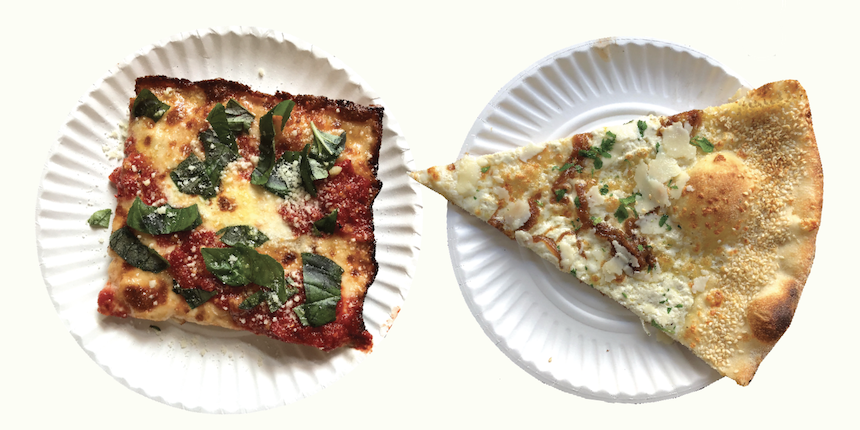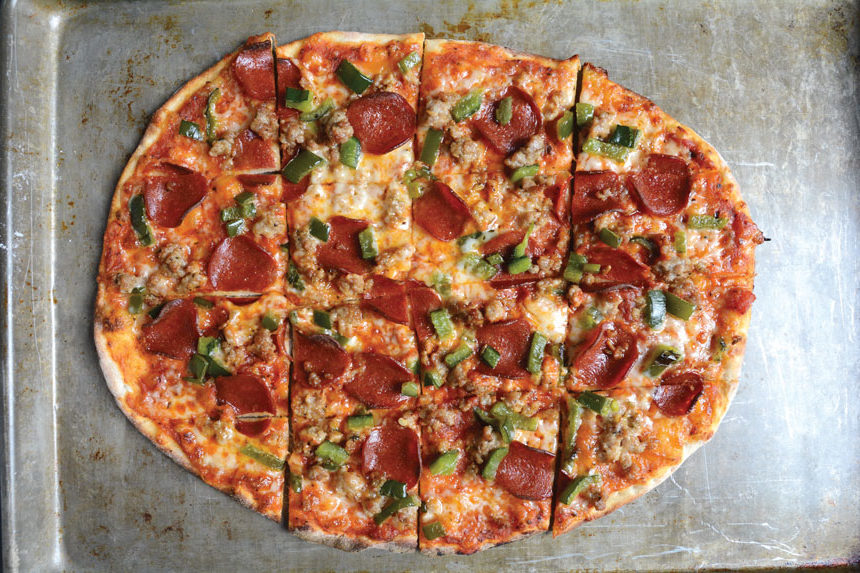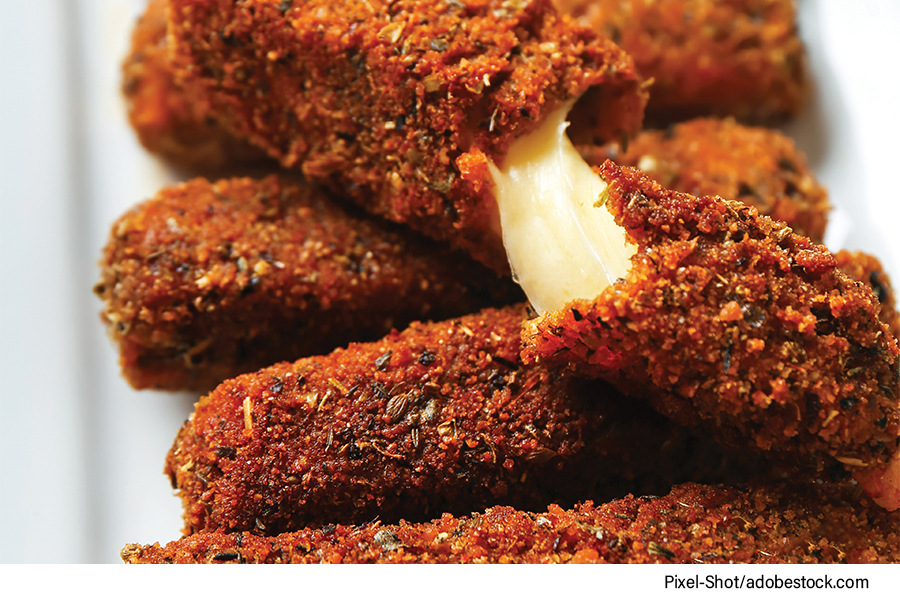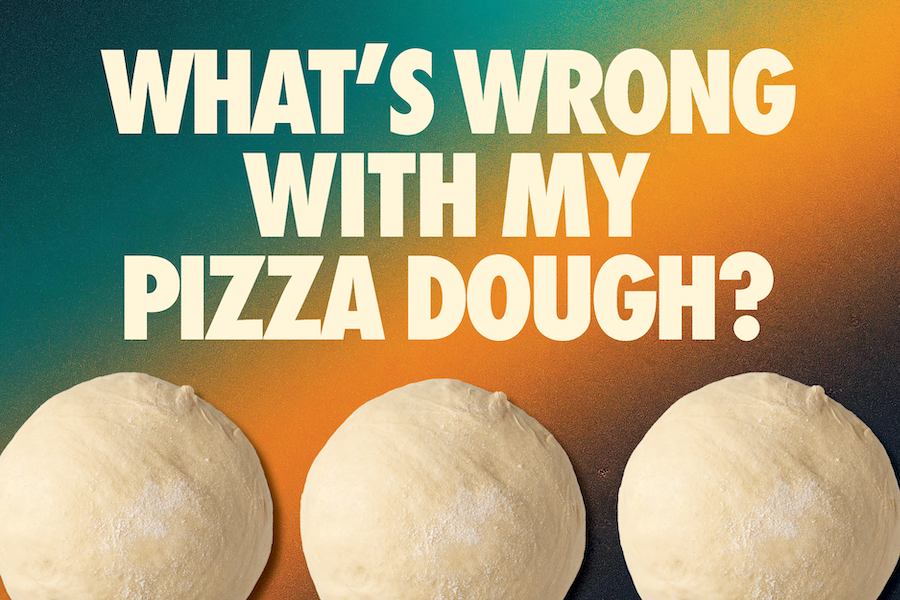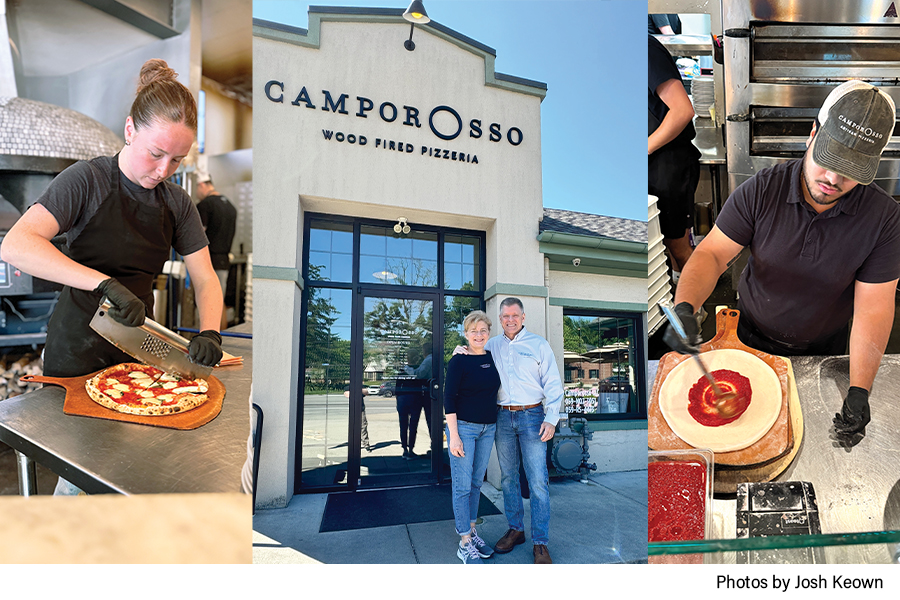Learn how to make the year’s biggest pizza styles: Detroit, New York, Grandma, Sicilian, Chicago Thin
We’re predict which pizza style will be the year’s trending pizza style. During our recent pizzeria operator survey, we asked which pizza styles pizzeria owners looked to add in the next year. We included those pizza style findings in our 2024 Pizza Industry Trends Report. You can see more of this year’s biggest trends in the report.
Let’s dive a little deeper into the five most popular trending pizza styles and get into the pizza dough formula and pizza dough recipes so you can test a new pizza style in your restaurant.
Top 5 Trending Pizza Styles Dough Recipes
Detroit Style Pizza is proving it has staying power as the hot pizza style to add. A mover and shaker is New York-style pizza making its debut in the Top 5 Pizza Styles to add. Pushed out of the Top 5 by a paper-thin margin is Roman style. Here are the Top 5 Pizza Style trending this year:
- Detroit
- Grandma
- Sicilian
- New York
- Chicago Thin
Now let’s explore each dough style and find out how to make Detroit, New York, Grandma, Sicilian and Chicago Thin pizzas with tips and advices from the pizza industry’s top pizza masters and dough experts.
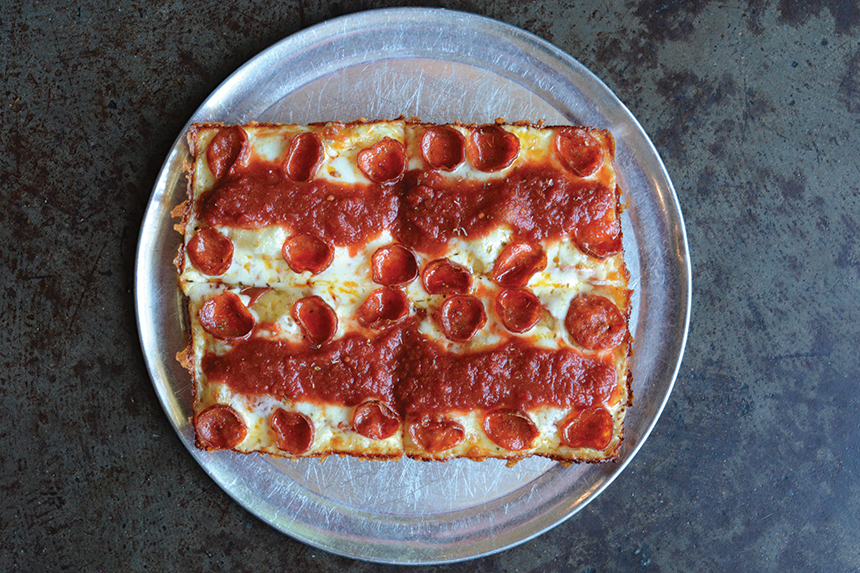
Pepperoni Detroit-style Pizza, Via 313, Austin, TX
Detroit Style Pizza Dough Recipe
Detroit-style pizza is the top pizza style on the rise two years in a row. Detroit pizza came on the national scene a decade ago and growing to mainstream status within the past few years. The square pizza is distinctively unique down to how its dough is proofed, the baking process down to ingredients used and how to apply toppings.
Detroit-style pizza features a medium-thick crust that’s light and airy on the inside, yet crispy on the outside, a signature of authenticity that’s achieved by a high moisture content (between a 68- and 72-percent hydration level) and the proofing process. Preparing your Detroit-style pizza dough takes care and attention to detail. Other identifying characteristics include: Pizzas is baked in square steel pans. Cheese is spread evenly across the entire pizza, edge to edge. Brick cheese is commonly used. Sauce goes on the top. Check out a complete Guide to Detroit Style Pizza.
Now to the Detroit Style Pizza Dough Recipe. We have three recipes for you to try from some of the biggest names in the pizza business. They are:
Smoke’s Detroit-Style Pizza Dough Recipe. Jeff Smokevitch is a World Pizza Champion who brought Detroit Style Pizza to Colorado — first to Telluride at Brown Dog Pizza, then to Denver and beyond with Blue Pan Pizza. Follow this Detroit pizza recipe. Jeff Smokevitch leads a demonstration at Pizza Expo to teach how to make a Detroit-style pizza. You can also watch him as he created a Detroit pizza in his home kitchen.
Detroit-Style Pizza Dough by John Arena. Co-owner of Metro Pizza in Las Vegas, John Arena is a go-to pizza dough expert. He shares his Detroit pizza recipe that includes a Poolish for Detroit-Style Pizza Dough. His recipe walks you through the dough process, dough fermentation and room temperature proof.
Tony’s Trending Recipe: Detroit Pizza. Tony Gemignani is a world-famous pizza master and restaurateur with over 30 restaurants, most notably Tony’s Pizza Napoletana in San Francisco. His recipe pays tribute to Shawn Randazzo.
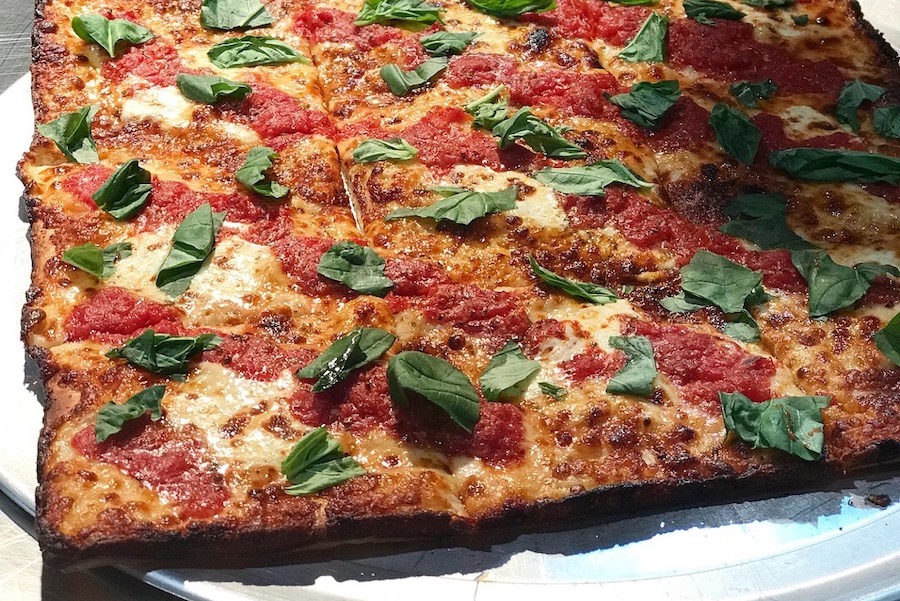
Grandpa Pie, Tony’s Pizza Napoletana, San Franciso, California
Grandma Pizza Dough Recipe
Grandma Pizza (aka Grandma Pie) is New York’s famous other pizza style. In a 2015 Respecting the Craft Column, Tony Gemignani made this prediction about the grandma pie that has come to fruition: “this unique style will soon gain momentum in the Midwest and on the West Coast.” What made the style gain momentum? He went on to say, “They are cooked in a half-black reinforced sheet pan, are heavily oiled and feature sliced mozzarella (sometimes shredded or fresh mozz). These pizzas are topped with tomato sauce and cooked in a gas brick oven. You could finish it with Grana Padano, herbs, pecorino, olive oil, Parmigiano and chopped garlic. Sometimes the dry cheese can go on before. This pizza is typically shorter/thinner than your typical Sicilian. It’s great for delivery, dine in and by the slice. Typically, this pizza is slightly fried more than a Sicilian because of the excess oil and thinness.
“Some of these pizzas have a very simple tomato sauce comprised of puréed or hand crushed tomatoes. Others have a super-sweet sauce or are a bit over-spiced. For example, you could use sugar, onions, onion powder, oregano and other dry or fresh herbs in the sauce. I’ve seen it several ways. Italian families always remember their grandma or mother making pizzas at home. It was always pushed out in some well-oiled pan, and they would add ingredients like anchovies, olive, crushed tomato, onions or cheese. The name literally originated from our collective grandma. It was simple, memorable and fun.”
Now, let’s get into the Grandma Pie pizza dough recipe. Tony Gemignani shares a recipe can be made from your pizza dough. Try the Grandma Pizza Dough Recipe.

Sicilian Pizza by John Gutekanst, Avalanche Pizza, Athens, Ohio
Sicilian Pizza Dough Recipe
To get to know this pizza style, let’s turn to our dough expert Laura Meyer in her Knead to Know: Sicilian Style Pizza. “Nowadays when you see Sicilian-style pizza on a menu, it generally means a thick-crust pizza made in a rectangular pan cut into square slices. Besides that, the range of toppings and application of toppings varies just as much as any other style of pizza. In addition, like other styles the line between bread and Sicilian “pizza” has blurred tremendously with techniques associated with other styles blended into it. But Sicilian pizza traces its inception back to sfincione.”
The dough is where the differentiation shines for Audrey Kelly, owner of Audrey Jane’s Pizza Garage in Boulder, Colorado in an article exploring the difference between Grandma and Sicilian pizzas. “They are risen for hours and then par baked. The bottom should always be crispy, providing a nice crunch to contrast the pillowy, light middle. They are rectangular in shape as opposed to the traditional square shape of a grandma. All of our pizza is naturally leavened, AKA sourdough. The Sicilian is where you can truly taste the beauty of this method. The long rise and fermentation really accentuate the flavor and strengthens the texture. I think of Sicilians as a cloud that carries a light amount of toppings. Some people might think that since the Sicilian is thicker in structure it can hold up to more toppings.
Dough Expert Laura Meyer, owner of Pizzeria da Laura in Berkeley, California, expands further. “Sicilians land between focaccia and the Roman pan style in that focaccia is very closely related to the Sicilian in its original form. Roman techniques and flours have begun to creep into the Sicilian style turning it into a sort of hybrid. Roman can take upwards of three days and have a high hydration leading to a very thin, crispy crust with a very large and airy open crumb structure. Since a lot of toppings are put on after the cooking process in Roman pans, it makes sense to have a large, open crumb structure as it does. The Sicilian style is meant to carry a heavier, wetter ingredient load so having a spongier texture that can hold everything without deflating it is ideal. Using long and controlled fermentation times, like Chris and John do, give the Sicilian a lightness to the interior. Hydrations into the 70s and above are more common with Roman styles and breads although can be found with some Sicilians. When it comes to higher hydrations, cook temps and whether doughs are topped and baked from raw or par baked then topped and cooked lends to very different finished products. The debate over par bakes or cooked form raw extends into Sicilians. For those looking for a slight crisp and a very soft interior, cooking from raw will give you that texture albeit a longer cook time. Par baking is going to give you a soft interior but the double bake is going to cook out more of the moisture giving you a firmer outer crust.”
Check out a basic Sicilian Style Pizza Dough Recipe to test in your kitchen.
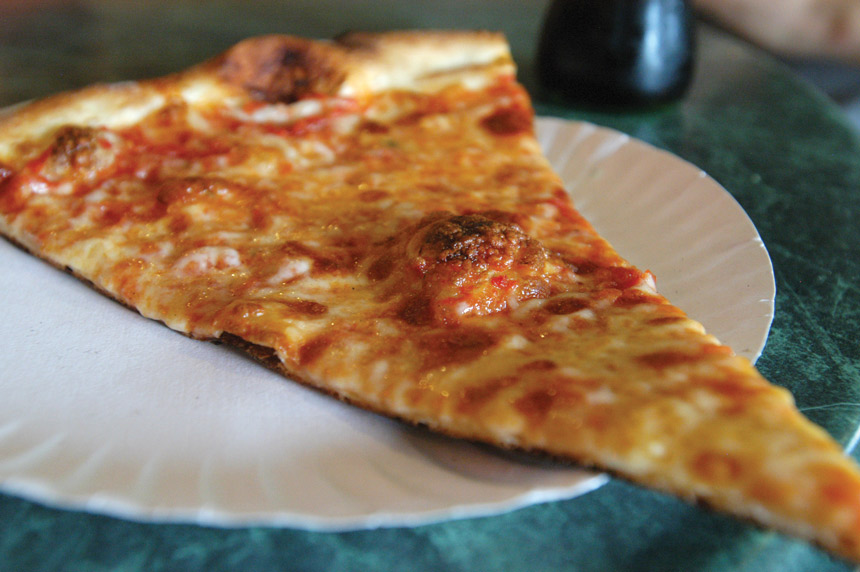
New York Style Pizza, Joe’s Pizza, West Village, New York City
New York Style Pizza Dough Recipe
New York Style Pizza is the No 1. most popular pizza in America. The first licensed pizzeria to open in the U.S. was Lombari’s, which opened in New York City in 1905. Dough uses flour, water, yeast, salt, olive oil. Typically, it requires a two- to three-day cold ferment. The crust is crispy, yet light and foldable. Crust should be about 1/8-inch thick through the middle with a raised edge. Slices should be cut into triangles. The signature way to eat a New York pizza slice is to fold it in half from crust edge to edge. Toppings are dispersed evenly and not too heavy to weigh down the pliable slice.
International Pizza Consultant Anthony Falco contributed a Knead to Know Column all about NY pizza. In the article, he says, “a NY-style pizza is big, it’s thin but not paper thin, crispy but still flexible enough to fold without cracking, and the toppings should be a cohesive amalgamation and applied with restraint and simplicity. It shouldn’t be too fancy, but that doesn’t mean you can’t use quality ingredients. It should always be cooked directly on the stones of the oven floor, be that gas, wood, electric or coal.” Falco also provided his New York Pizza dough recipe. Try Anthony Falco’s New York Style Pizza recipe.
In John Arena’s Knead to Know column, he conducted a Q&A with 2017’s NY-style Caputo Cup winner Dr. Derek Sanchez, who owns MiaMarcos in San Antonio, Texas. Derek provided a New York Pizza Dough formula using Baker’s Percentage. Check out Derek Sanchez’s New York Style Pizza dough formula.
For a traditional, basic New York style recipe, try this New York Style pizza dough recipe.

Chicago Thin Crust Pizza, Eno’s Pizza Tavern, Dallas, Texas
Chicago Thin Style Pizza Dough Recipe
Notice all the super thin crust pizza that many are referring to as Tavern style lately? The original tavern style is from Chicago, a city also known for its Deep Dish. Chicago Thin Crust Style Pizza is far from its thick sibling. It has recently experienced an explosion in popularity. It’s something that the late Dough Doctor Tom Lehmann saw coming in the early 2010s. He said, when it comes to Chicago Thin, “any good, patent grade bread flour with 10.5- to 11.5-percent protein content should work well.” There are also a couple specifics he discusses. “A planetary type mixer will work best for mixing this dough. You will need to use a dough sheeter/roller to form the dough into skins. You could roll the dough by hand, but you will soon find this to be a lot of work. Hot and cold presses are just not suited to this production method.”
The Dough Doctor provided his dough formula for Chicago Thin with step-by-step instructions. Follow Tom Lehmann’s Chicago Thin Crust Pizza Dough recipe.
Dough expert Laura Meyer offers advice for those looking for a super crispy Chicago Thin Crust Pizza in her article Tavern Style Pizza is Sweeping the Nation. “Par baking the dough is another way to add crispiness to a thin-crust pie. As much as I love crispy thin-crust pizzas, they lose that crunch very quickly as the pizza cools down. Maintaining that crispiness is one of the hardest traits to keep. Utilizing cornmeal and a par bake or double bake method helps ensure your pizza stays crispy for a longer period of time. How would you do this?
Coat your dough ball in cornmeal and roll it out with a rolling pin or use a sheeter. Once you’ve reached your desired size or thickness, dock it, place it on a peel and slide it into the oven. Without any sauce, cheese or toppings, par bake it just for two minutes or just until it’s no longer raw and the bottom is just beginning to show some spots of color. Remove it from the oven and stack them until ready to use. When an order comes in, top it as you normally would and then finish the bake until it’s crispy and the toppings are cooked.”
Want to go even crispier, Tony Gemignani says in a Respecting the Craft column, “You can actually achieve a crispier crust by cooking in a well-seasoned pan. And doing so also is great for texture and flavor. Different types of oils can be used if you settle on this method. Play around with olive oil, cottonseed oil, canola or fats such as Crisco, butter or lard.”
Let’s not forget a Chicago Deep Dish Dough Recipe
Often thought of as the Windy City’s only pizza style. Deep Dish, joins Chicago Thin and Stuffed Pizzas as region’s pizza styles. Particularly popular in the Midwest, this style of pizza speaks for itself. It’s a close cousin to the Chicago-stuffed pie — the obvious difference being that all the toppings are placed on top and there is only one layer of dough. This unique pie stands out with a crisp, biscuit-like crust that comes up the sides of a three-inch pan. It’s thick with cheese and other ingredients, and then topped with a chunky tomato sauce and baked for 30 to 45 minutes.
Here’s a Chicago Deep Dish Pizza Dough Recipe.
This should get you started testing a new trending pizza style. Have fun and let us know what you learn in your test kitchen.
